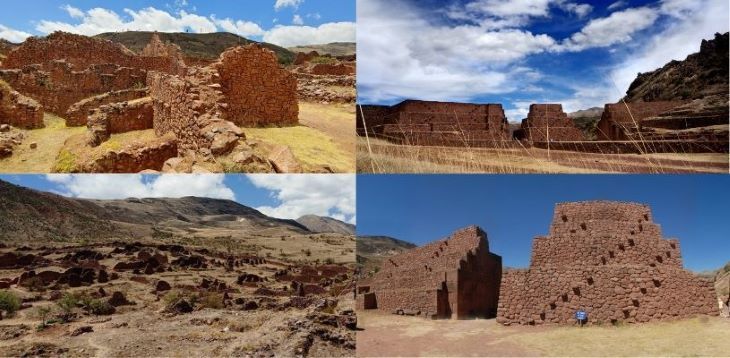Pikillacta in Cusco Peru was one of the most important administrative centers of the Huari (or Wari) culture, between the 6th and 9th centuries of our era, and represents the Huari planned urbanism par excellence. Some specialists maintain that it remained in force until the time of the Incas, although no remains have been found to corroborate this presence.
Location
Pikillacta is currently considered one of the best known and best preserved pre-Inca cities that exist in Peru. It is located 30 km southeast of the city of Cusco, over 3350 meters high and covers a territory of approximately 50 hectares.
The archaeological site of Pikillacta in Cusco Peru

Pikillacta 
Pikillacta
The renowned Peruvian historian Alfonsina Barrionuevo refers to Pikillacta as follows: «The slopes of the Wayllonqa hill, where Pikillacta is located, an ancient pre-Inca city, gleam like gold in the sun. Ripe weeds gild the ruins through whose empty streets, squares with giant areas, two-story palaces and multi-family dwellings, hundreds of lizards run wearing the gem of their red heads ».
Pikillacta in Cusco Peru is a name assigned after the arrival of the Spanish. Its name in the Incan is unknown, but it is presumed that it was Muyuna (going around in a circle), Muyna or Mohína. This place is known today as Wakarpay, which is part of the Pikillacta complex which is Peru’s sacred valley.
It is also known that the city of Cusco for the Quechuas was something like “Mecca.” Thus, each inhabitant of the Tawantinsuyo had as a dream to visit the «city of the puma» at least once in his life. Visiting this city simply gave people a higher level, for example, if two people who came from far away places and were traveling the wrong way, the person who had already visited Cusco was recognized, and greeted with respect.
who hadn’t visited it yet. Today to the east of the paved road at kilometer 35 (mile 22) is the Rumiqolqa (rumí = stone, qolqa = warehouse) very famous in Inca times because from there the andesite that was used to build the most important buildings was extracted. from the city of Cusco. Today, the mine is still exploited, and the substructures are completely disturbed.
Pikillacta Ruins
Pikillaqta is located in the southern part of the Cusco valley, it belonged to the Wari culture that spread from Ayacucho. Piquillacta is one of the things you have to do in Cusco, along with great visits like Pisac or Ollantaytambo in the Sacred Valley of the Incas; In Piquillacta you can see sharp stone walls, of the purest pre-Inca origin and possibly one of the main cities of the Wari culture of that time.
Qaranqayniyuj
Qaranqayniyuj was the largest settlement after Pikillacta Ruins. Some of its buildings have the shape of semicircles, built irregularly, part of it is in a natural hollow, and the other is in a larger plateau than the previous one.
Choqepucjio
Choquepucjio is one of the most impressive constructions of the Pikillacta Ruins, they are located on the left side of the Huatanay river. These buildings have similar characteristics, constructions of 2 or 3 floors where the first floors are made of stone and mud, and the upper floors only of adobe and mud.
Urpicancha
Its name could be translated as the “house of the birds”, it is one of the most important structures in Piquillacta and Cusco; It has platforms of extraordinary quality, excellently armed without amalgamation of any kind, it is located on a small plateau with a huge mountain behind it, east of the Huacarpay lagoon in Cusco.
Kunturqaqa
Kunturqaqa is simply a large rocky promontory that stands out from the Huatanay, west of the city of Cusco its name can be translated as “Rock of the Condors” and it is understood that they gave it that name since the rock has the shape of the head of a condor; however the true meaning of the place is not known.
Amarupata Platforms
Amarupata means “place of serpents” and perhaps it was because serpents abounded in this place; These platforms are located southeast of the city of Lucre, its ancient water channels are magnificent and are still used by the inhabitants of the area even now.
How to get to Pikillacta in Cusco Peru?
There is no service for this route, therefore we must hire a Tour to the South Valley of Cusco in Cusco. If you want to travel personally, take the cars that go to Oropesa, taking into account that you must have an essential tourist ticket to these visits.










